One of the most common questions that I receive is, “What kind of shoes do you wear? What kind of shoes should I buy?†This is a very hard question to answer because everyone’s foot is different! I hope this guest post from an experience shoe-fitter named Meg helps you in your quest for the perfect running shoes.
Hi, everyone! I’m Meg and I’ve been an avid reader of Healthy Tipping Point since it was See Bride Run. My sister also writes a blog at Blue Plate Special and I’ve been reading “healthy living†blogs for some time. I’m honored to guest post here about something I feel is very important for runners – shoes!
Before I moved to New York City to attend graduate school, I worked full time at a running store in Boston, selling running shoes by analyzing people’s gait and fitting them for the proper shoe. While there I met some amazing people – including my manager who was a sub three-hour marathoner (and female, no less.) I learned so much about shoes while working there, and want to share my knowledge since it’s not something most runners, even bloggers who run, know a lot about.
If you don’t know what shoes work for you, it’s important to get fit at a running store where the employees can perform gait analysis. This simple process involves looking at the shape of your foot and arch, then watching you run. Based on shape, stature, arch, and pronation, they can suggest a variety of shoes that may work for you.
Many runners have heard of pronation, which you can find explained more in depth here. Once you have your gait analyzed, you can choose a shoe in the pronation category that fits your gait. The best thing is try a lot of shoes and run in them to test how they feel. Compare one of two pairs on each foot to feel the difference – your shoe should feel natural, with nothing poking or rubbing the wrong way.
Here are the three basic types of pronation, briefly (here’s how to tell if you pronate):
- Overpronation – The arch collapses and the foot rolls inward, throwing the “kinetic chain†of ankle to knees up to hips out of alignment, which can cause pain and injuries.
- Underpronation – The arch is likely stiff, and the person runs on the outside of the foot. The person should wear a neutral shoe.
- Neutral – This is ideal and efficient running form. The foot hits the ground and rolls inward slightly but the knee tracks straight directly over the ankle.
The two main elements of running shoes are support and cushioning. Shoes are made with a mix of these components, be it a high cushion neutral support shoe or a regular cushion heavy support shoe. The word “support†refers to the denser material on the medial side (inward side) of the shoe that prevents overpronation. Therefore, if you do not overpronate, you will not need a shoe that is highly supportive. Most brands offer shoes in neutral, light, moderate, and heavy support.
Seen above, Asics uses a denser material in gray that you can see on the medial side of the shoe. They call this material Duomax. The 2150 is a popular shoe in the light-moderate support category.
This shoe from Saucony also uses a dense medial post in gray to show a wider band of support. This shoe, the Saucony Omni, is in the moderate support category.
Here is an example of a neutral shoe from Adidas called the Solution. The medial side looks no different from the lateral side, as there is no need to force the foot back from overpronating. This shoe would be appropriate for someone who has a neutral gait, thus not needing overpronation support.
Here is a shoe from Mizuno called the Nirvana. Mizuno uses a plastic piece called the “wave plate†to provide support, seen by the amplitude of the waves. This is one of their moderate support shoes.
Once you know which support category you need, you also have choices in cushioning. Shoe brands use different cushioning to absorb shock. When a shoe is old after 300-500 miles of running, the cushioning is what wears down. You feel that a shoe is “dead†when it feels flat and too close to the ground. All types of cushioning do the same thing, but they can feel quite different.
Here is a brief overview of the cushioning systems used by the brands:
- Asics uses gel, which has been described as having a “sinky†feel to it.
- Saucony uses Progrid, which is like a tennis racquet type of material that feels springy.
- Nike uses air, which feels light and soft.
- Adidas uses foam, which feels pillowy and soft, similar to the Nikes.
- Brooks uses Hydroflow, a liquid compound that feels firm.
- Mizuno uses the wave plate, a firm plastic piece that feels close the ground and firm (and is the same basic material used for support.)
Once you’ve tried running in various shoes, you may find that you prefer a certain cushioning. You can also choose whether you want a high or regular cushion shoe. A high cushion shoe costs more because it uses more material to absorb more shock. These last a bit longer, and are good for those runners who are heavier or are prone to joint pain or shin splits. Some prefer the feeling of more material under the foot, while others prefer a lighter shoe.
This shoe is the Glycerin, a high cushion neutral shoe from Brooks.
Hopefully you now have a good sense about how running shoes differ in support and cushioning. I will leave you with this short list of general tips.
1. Run in a running shoe ONLY, not a tennis shoe or cross trainer. These have no support for forward motion and will almost certainly cause you pain. It seems obvious but I have seen many a customer make this mistake!
2. Don’t be cheap. You may need to spend about $100 for a good pair of shoes, or around $140 if you want a high cushion shoe. I cannot tell you how many times someone came in to the store complaining about pain from their $40 shoe. Invest in yourself and your running! (Note from Caitlin: My shoes are $85 and are really good. I do think you need to spend some money to get good shoes, but there are more expensive and less expensive options out there that I believe are of comparable quality.)
3. Many people think Nike does not work for them. Give them a chance! Nike makes a LOT of shoes, and many are for style, not running. Stick with the “Bowerman Series†shoes from Nike, this is their best running line.
4. Everyone thinks they need a shoe with “the most support.†What they really need is appropriate support and cushioning. Not everyone needs a heavy support shoe, only severe overpronators. A shoe with too much support can be stiff, heavy, and uncomfortable.
5. Every brand updates their shoe models about once a year. The Saucony Guide 3 replaced the Guide 2, and the Brooks Adrenaline 10 replaced the Adrenaline 9 as the old models were phased out. The shoe changes color, design, and sometimes fit. This can be frustrating for those of us who find a shoe we like, however, the newer models have the same support and cushioning levels, so the shoe will still work for most.
6. Make sure to wear the proper size. Your running shoe should be a half to a full size bigger than your regular shoes. As you run your forefoot expands to absorb shock, and without enough room at the front you can get blisters and lose toenails.
Lastly, remember that everyone’s feet are different. Some people are prone to pain, have bunions, or other foot issues. These people will have to try on many shoes and may only find one model that works for them. Others have it easier and can wear many styles. The bottom line is: find what works for you and stick with it. Learn the name of the shoe so you can buy it anywhere, or bring it to your local running store if you want to replace it with the same pair. Your feet and body will thank you!
If anyone has any questions about fitting certain shoes or brands, let me know- my email is mwc011 (at) gmail.com.
I wear the Brooks Summon and LOVE it. I’ve bought three or four versions of this shoe over the year and love the fit of this neutral and price-friendly shoe. What kind of shoes do you wear and why?

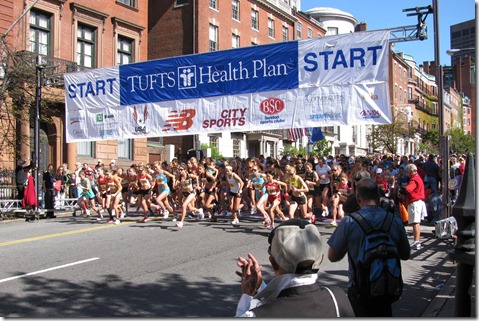

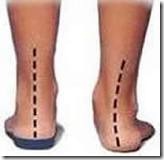
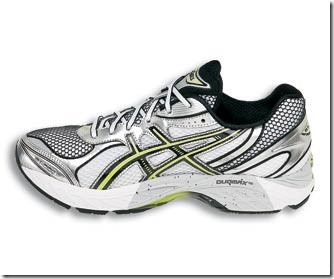
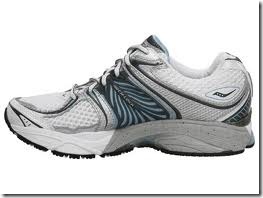
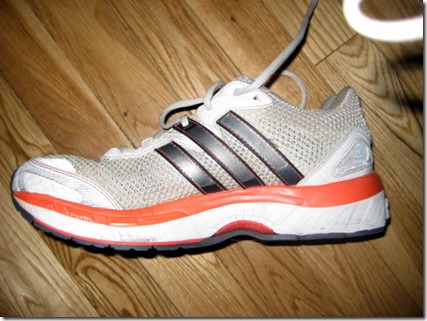
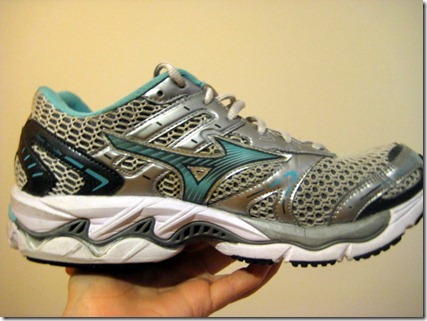
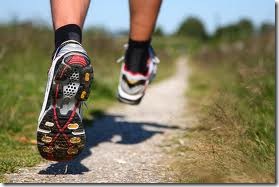
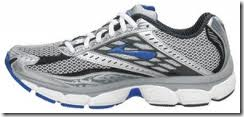

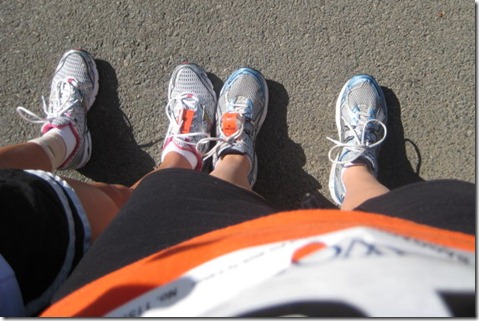
This was interesting to read, especially since there was recently an article on NYT.com that said you actually don’t have to pay a lot of money to get a great running shoe, if you know what kind of support you need and can find it elsewhere.
(http://www.nytimes.com/2010/10/23/health/23patient.html?_r=1&src=me&ref=general)